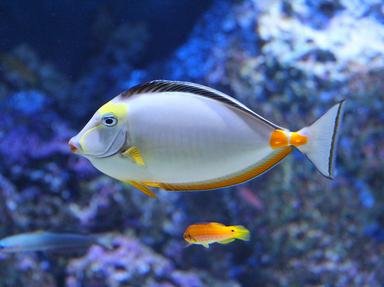Quiz Answer Key and Fun Facts
1. We start with the largest freshwater fish found in North America. Reaching a maximum length of 20 feet and weighing as much as 1,800 pounds, these are truly enormous. What type of fish is pictured here?
2. Sometimes called a 'squaretail' or 'coaster', this is the official state fish of eight U.S. states: Michigan, New Hampshire, New Jersey, New York, Pennsylvania, Vermont, Virginia and West Virginia. What type of fish is pictured here?
3. Native to temperate regions except in Africa, our next exhibit is not one found on many menus these days, although Queen Elizabeth II's coronation pie was made from them in 1953. Royalty should beware, though, as at least one monarch (King Henry I) apparently died from eating too many. What type of fish is this?
4. Also known as 'silver seabream' or 'squirefish', this fish is native of coastal waters from China to Australia. By what name would you find the pictured fish on an Antipodean menu?
5. The pictured fish is one of four species in a family of flatfish that are commonly found on the dinner table. What type of fish is this?
6. The pictured fish is also known as the itajara or the jewfish. Found primarily in shallow tropical waters it is native the Florida Keys, the Caribbean and the Brazilian coast. Which type of large saltwater fish is this?
7. Popular both as a food and as a game fish, the pictured species is found in all temperate and tropical oceans except the Mediterranean. A member of the mackerel family, which type of fish is pictured here?
8. From some seriously large fish to some very small ones, although there are numerous species of this oily, salt-water, prey fish. The pictured species grows to about ten inches in length and weighs about two ounces. Which type of fish is this?
9. Also known as St Pierre or Peter's Fish, this strange-looking creature has a flat, olive-yellow body with a large dark spot in the middle, and long spines on the dorsal fin. Found near the seabed at depths of anything from 15 feet to 1,200 feet, what fish is this?
10. Also known as goosefish, fishing-frogs, frog-fish and sea-devils, this is one of the ugliest fish you could come across, but one of the most delicious to eat. Native to the eastern Atlantic Ocean and the North Sea, what is this fish that looks to be almost all head and little else?
Source: Author
EnglishJedi
This quiz was reviewed by FunTrivia editor
Tizzabelle before going online.
Any errors found in FunTrivia content are routinely corrected through our feedback system.

